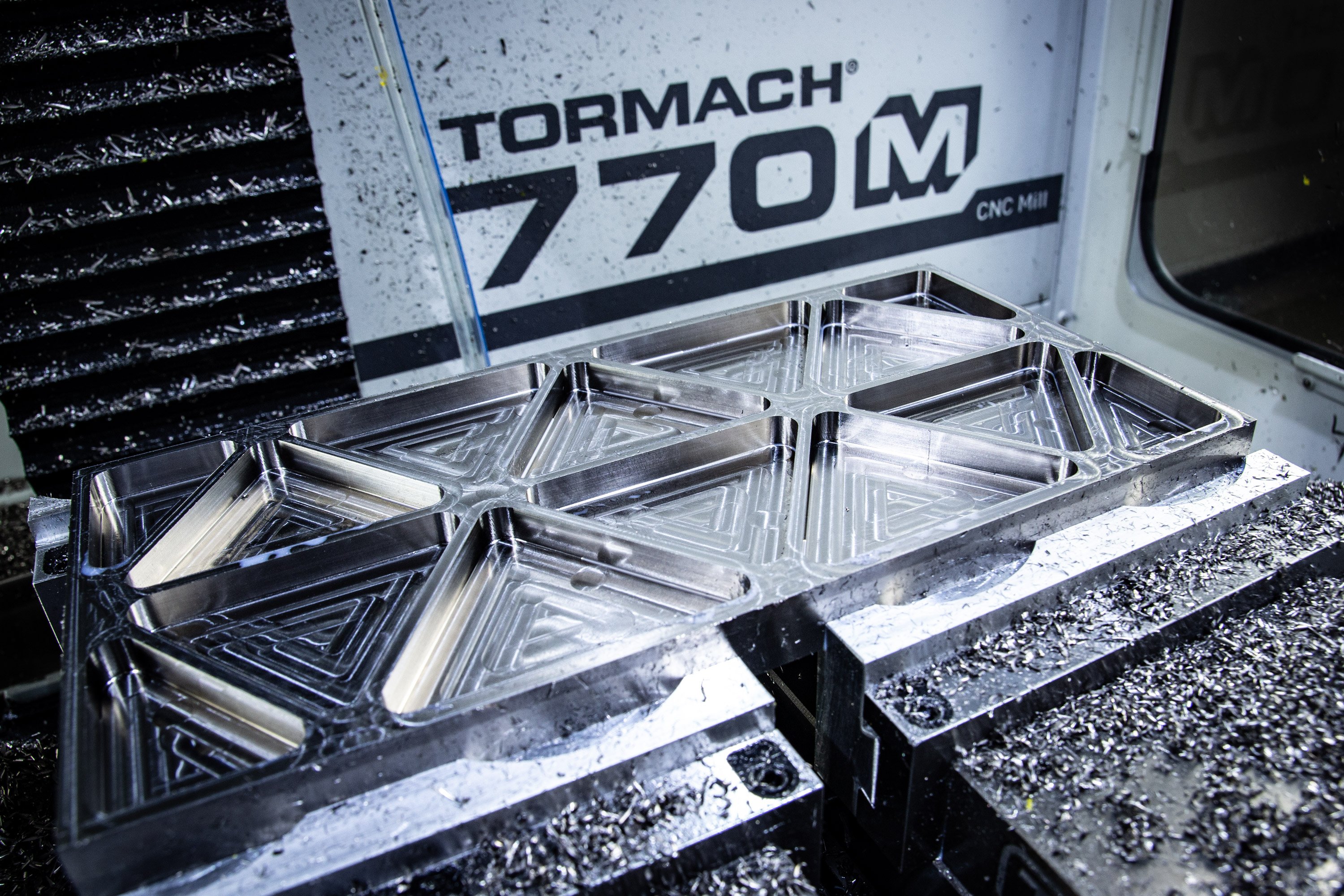Workholding (also known as fixturing) is one of the most complicated parts of CNC machining. But, like many complicated things, the devil is in the details. Sometimes, it can appear straightforward - like clamping your part in a vise - until you realize that you need to bite into the part more or you want to get more efficient with loading/unloading.
There is an endless list of reasons and ways to do fixturing, and there is rarely a single correct answer, which is why it can be so complicated.
Fixture Plates
Fixture plates can ease a lot of pain when trying to hold parts, especially when you have high-mix, low-volume parts, like many Tormach owners. Fixtures plates, like the tooling plate from Saunders Machine Works, have a series of threaded holes along the flat surface. This allows you to secure down any variety of fixture you’d like.
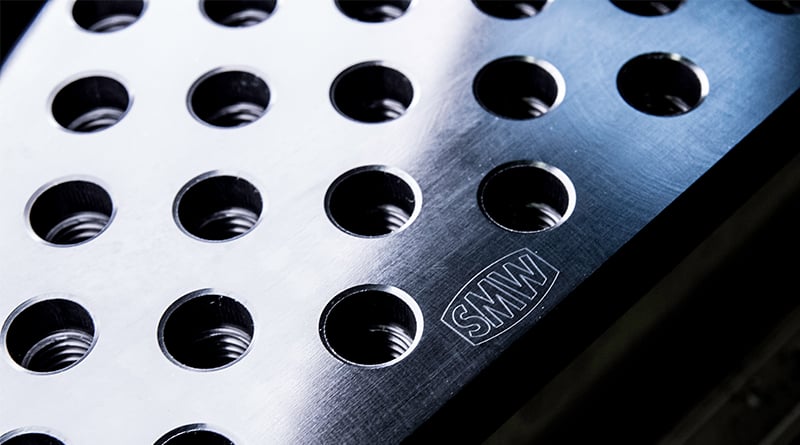
Even if you just want to attach a vise to your machine, screwing it into a fixture plate that is secured to your machine table will save you time and effort. Fixture plates are easier to clean and provide a fast way to swap things out.
What’s more, you can use the plate as a fixture itself. If you’re in need of ultra low-profile workholding, you can use toe clamps, like the Mitee-Bite Edge Clamps, to secure your part directly to the plate.
Keep Things Simple
With soft jaws, hard jaws, vises, pallet systems, vacuum systems, and beyond, it’s easy to overcomplicate your setup. Your workholding is only as strong as its weakest link, so the fewer links you have, the simpler it is to create solid fixturing.
The key to keeping your workholding simple is picking the right tool for the job. For instance, parts that have odd shapes but a large mass could benefit from hard or soft jaws, like the CarveSmart Aluminum Jaw Set that can be cut to precisely hold your part. They also have a SmartStop to make sure that the jaws go into the vise at precisely the same spot every time, which means you can swap them out as needed without having to re-indicate the part every time.
Parts that don’t have as much material to grip onto will benefit from something like the TalonGrip system that has low-profile jaws that bite into your part.
Referencing Important Surfaces
Creating modular workholding is important to keeping your setup efficient and work moving faster. The benefit of using a fixture is being able to reuse it without having to re-reference everything, every time. The key is to reference important surfaces, but not too many. If you reference too many surfaces, you’ll be locked in, which can cause other challenges as you start cutting parts. Stock varies, finish varies, and even things like temperature can change the conformity of your part and workholding. That’s why indicating a few choice surfaces will keep you efficient without adding any headaches.
For instance, if we wanted to hold this top hat.
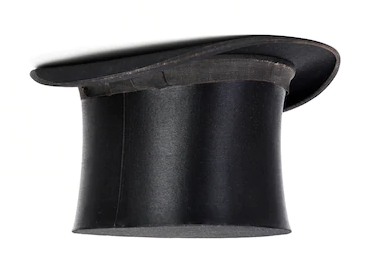
If we reference both of the surfaces and run one hat, we are limited. At that point, if we wanted to run a hat that is taller, our second surface (datum) will be messed up.
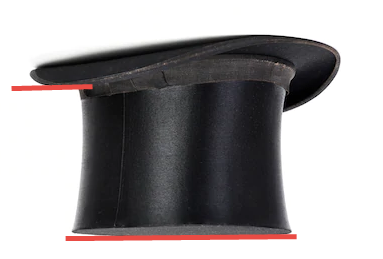
If we reference both surfaces, that makes the dimension critical and locks us in.
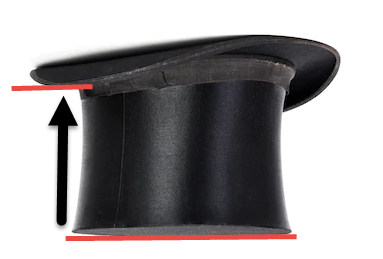
If we reference only one of the two surfaces, then the hat height can vary.
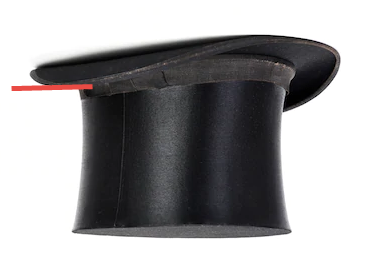
If your critical dimension is the wall thickness of the top of the hat then reference here.
Parts will always vary, so you want to allow for that variance in as many ways as possible. Allowing for that variance will keep your fixture flexible, but also reusable and efficient.
Don’t Forget Chucks
Most of us have used chucks when turning parts, but they can also provide a lot of easy workholding opportunities on a mill. Round parts can be tricky to hold, especially when you’re dealing with raw stock that can vary ever-so-slightly in dimension.
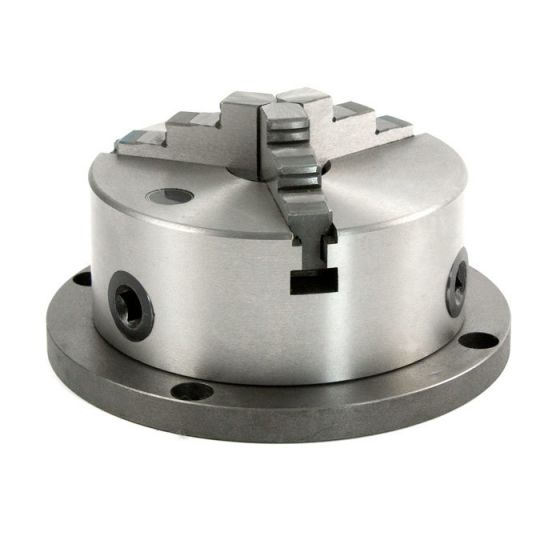
While a chuck isn’t quite as modular or easily repeatable as some other methods, it can reliably hold round parts. Simply bolting or clamping the chuck to your table or fixture plate simplifies holding round parts.
They are also helpful if you use a 4th axis because they have more flexibility than other methods of 4th axis workholding.
Be Aware of Tolerance Stacking
Using CNC typically means you want to be precise - that means you need to be aware of tolerances throughout your machine. Fixturing is the baseline connection between your part on the mill, so if you’re workholding isn’t precise, your part definitely won’t be.
Tolerance stacking is the compounding of multiple tolerances. That means every connection needs to be considered when calculating just how precise you need to be versus how precise you can be. The fixturing, your tooling, the stock… everything will affect the tolerance of your final part.
Workholding is a very controllable element of your setup. That means if you can be overly precise with how you hold a part, and it becomes less of a concern on your final part.
Fixturing can be one of the deepest (and darkest) rabbit holes in the world of machining, but that’s mostly because it is so open-ended. Keeping all these details in mind when you are getting ready to hold your work will ensure that you make better, more efficient parts.
